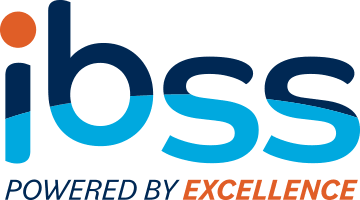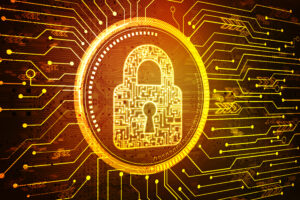As a government contractor, adherence to NIST SP 800-171 requirements is not just an option, but an essential mandate. Proactive preparation for compliance with these security requirements is crucial in order to avoid potential disruptions to your business operations. This first in a series of blogs is focused on the Access Control security requirement.
Key Takeaways
- The critical role of access control in safeguarding Controlled Unclassified Information (CUI), as guided by NIST SP 800-171, ensures that system access is available only to authorized users.
- Rather than reacting to potential threats, organizations should prepare by actively developing, implementing, and monitoring their access control policies.
- It is important to set up firewalls, intrusion systems, and methods of mobile device management to limit system access.
- IBSS can help you prepare to meet NIST SP 800-171 compliance requirements.
Understanding and Implementing Access Controls
In an era where data breaches are commonplace and the sophistication of cyber threats is escalating, the importance of robust access control measures cannot be overstated. Aligned with NIST SP 800-171 requirements, the focus of this article is on the intricate yet crucial aspect of limiting system access to authorized users.
Creating a Secure Environment. One objective is to build resilient defenses against cyber threats by focusing on creating a secure environment. It is crucial to regularly review role-based access and adjust access as needed. Securing access to organizational devices can reduce the attack surface by making it more challenging for individuals to gain unauthorized access.
NIST SP 800-171 Access Control: A Closer Look
- Limiting System Access to Authorized Users
People: The first line of defense in any cybersecurity strategy is the people involved. It’s about ensuring that only those who need access to sensitive data have it. This involves robust authentication mechanisms and continuous training to keep team members aware of the latest cybersecurity practices.
Processes: Effective access control needs well-defined processes that govern how access to data is granted, reviewed, and revoked. It’s about having clear protocols and procedures in place that dictate how data is accessed and by whom, and ensuring that these processes are consistently followed.
Technologies: The right technological tools are essential for enforcing access control. This includes everything from advanced encryption methods to intrusion detection systems, ensuring that only authorized individuals can access sensitive data.
Summary: Access control, as defined by NIST SP 800-171, is a series of interlinked components that work together to secure your information systems (imagine your digital environment as a high-tech fortress). Access control (3.1.1) serves as the gatekeeper, using robust authentication methods to ensure only those with the right “digital keys” gain entry. Once inside, transaction control (3.1.2 – 3.1.7) dictates the actions users can take based on their role. Transaction control prevents unauthorized interactions with sensitive data. The separation of duties (3.1.4) is like having different departments in a company, each with its specific role, minimizing the risk of insider threats and data breaches. The concept of least privilege (3.1.5 – 3.1.6) ensures everyone’s access is just enough to perform their job, not any more or any less, thereby reducing the potential for misuse. Underpinning this is audit and surveillance (3.1.7), where sophisticated monitoring tools track who accesses what and when, supplying an essential tool for compliance and swiftly spotting any anomalies.
- Limiting Processes Acting on Behalf of Authorized Users
People: Access control forms the bedrock of securing processes for authorized users. Organizations must be meticulous in defining and enforcing who has access to their CUI. To ensure that only authorized individuals can initiate processes, use authentication methods that verify user identities, prevent unauthorized access, and guarantee that processes align with the permissions granted.
Processes: Secure execution of processes is vital. This involves adhering to encryption standards and minimizing vulnerabilities. Processes should be aligned with established organization security policies and industry standards.
Technologies: Technological solutions should be leveraged to facilitate secure process executions. A few solutions include: endpoint security, privileged access management, role-based access control systems, and application allowlisting.
Summary: Controls 3.1.8 – 3.1.14 within the NIST SP 800-171 framework address various aspects of cybersecurity, covering critical areas to address confidentiality, integrity, and availability of sensitive data. Further delving into these controls will provide understanding of their significance and impact on bolstering cybersecurity measures. Before gaining access to a system, organizations should empower authorized users with the knowledge base to make informed decisions by notifying users about system usage policies (3.1.9). These policies should follow the applicable CUI guidelines. Remote access sessions require an encrypted virtual private network (VPN) to enhance the security confidentiality of the session, as well as automating the monitoring of remote sessions to create audits of the connection activity (3.1.12) (for example, it is like pulling up your browser history and being able to view and revisit every website you have accessed). Additionally, companies should employ cryptographic measures that adhere to cryptographic standards (3.1.13); finding an applicable process that hides information from unauthorized users. One form of access control is role-based access control that determines a user’s access to resources based on their job role. Access control points within the environment are used to enhance organizational control over remote access connections (3.1.14). This reduces susceptibility of unauthorized access to CUI. Lastly, promptly terminating authorized sessions reduces the window of opportunity for unauthorized access; user sessions are to be actively managed and closed when not in use (3.1.10 – 3.1.11).
- Limit System Access to Devices
People: By keeping an inventory of corporate devices, companies can limit access to certain devices by monitoring the activity on each device and mapping it to an individual.
Processes: Clear and concise policies/processes are essential for protecting your organization from cyber threats.
Technologies: Ensuring proper patch management and configuration of virtual local area networks (VLANs) can prioritize vulnerabilities and mitigate organizational risk..
Summary: There are several approaches to limiting system access to devices by focusing on three main technologies: firewalls, network segmentation, and device security. Firewalls control which devices are allowed access to the network by ensuring only authorized devices are allowed access (for example, authorize wireless access prior to allowing connections (3.1.16)). Implementing firewalls also controls the traffic flow on the network. Similar to firewalls, intrusion prevention and detection systems monitor network traffic, system logs, and other data sources, such as port scans, unauthorized access attempts, control connection of mobile devices (3.1.8), and malware infections. Intrusion systems are able to prevent, detect, and block malicious activity. Next, focusing on network segmentation wireless access and mobile devices (3.1.17 – 3.1.19), IBSS can use virtual local area networks to separate different devices on the network, ensuring only authorized devices have access to what is necessary. By implementing device security, we can enforce device security policies, including password complexity requirements, encryption, and mobile device management (MDM) solutions. Keeping track of devices connected to the network helps identify unauthorized devices and potential security risks. IBSS ensures devices are up to date with the latest patches, mitigating known/common vulnerabilities, encrypting sensitive data on devices, installing antivirus software, and implementing allowlisting on devices only allowing approved applications that fall under authentication and encryption standards (3.1.16 – 3.1.22).
These are just a few examples of how to implement Access Controls whether you are a DoD Contractor or part of the Defense Industrial Base (DIB). Look for our next blog on Awareness and Training.
Stay Ahead of the Game: Ensure Your NIST SP 800-171 Compliance for DoD Contracts
IBSS will use our 20 years of corporate DoD cybersecurity experience to prepare you for NIST SP 800-171 compliance. We specialize in developing cybersecurity strategies that align with organizational business processes to detect or prevent cyber attacks. We identify threats and vulnerabilities, and we assist organizations with managing risks to critical data. We provide expert support to promote compliance with Defense Federal Acquisition Regulation Supplement (DFARS), Federal Information Security Modernization Act (FISMA), Federal Risk and Authorization Management Program (FedRAMP), NIST SP 800-171, and Privacy requirements.
Contact us now to get tips on how to get started by developing your company’s NIST SP 800-171 SSP.












